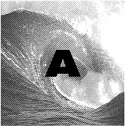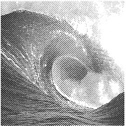
Steering Committee and Staff Biographies
Chairman
William Ryan received his Ph.D. from Columbia University in 1971. He is currently a Senior Scientist at the Lamont-Doherty Earth Observatory and an Adjunct Professor of Earth and Environmental Sciences at Columbia University. Dr. Ryan is an expert in the use of multi-frequency sonar systems for seabed mapping and seafloor characterization, while also being active in a wide range of other earth science interests.
Vice Chairman
Robert Detriek obtained his Ph.D. in 1978 from the Massachusetts Institute of Technology/Woods Hole Oceanographic Institution joint program in Marine Geophysics. Dr. Detrick has worked as a Senior Scientist at the Woods Hole Oceanographic Institution (WHOI) since 1991. His research focuses on the seismic structure and evolution of oceanic crust, mid-ocean ridge processes, and the dynamics of the oceanic upper mantle. Dr. Detrick is currently the Chair of the Department of Geology and Geophysics at Woods Hole.
Keir Becker received his Ph.D. in oceanography from the Scripps Institution of Oceanography in 1981, and he is currently a Professor in the Division of Marine Geology and Geophysics at the University of Miami, Rosenstiel School of Marine and Atmospheric Science. Dr. Becker's research interests include the study of heat flow and hydrothermal circulation through the ocean crust and how this flow depends on and alters crustal physical properties. Dr. Becker has extensive experience in observatory research, particularly in the use of borehole observatories.
James Bellingham received his Ph.D. in physics from the Massachusetts Institute of Technology in 1988. Dr. Bellingham is currently Director of the Engineering Division of the Monterey Bay Aquarium Research Institute and, formerly, the Laboratory Manager for the Autonomous Underwater Vehicles (AUV) Laboratory of the MIT Sea Grant College Program. Dr. Bellingham is a highly respected ocean engineer with extensive experience with Autonomous Undersea Vehicles (AUVs). Dr. Bellingham has been a member of the University-National Oceanographic Laboratory System (UNOLS) Deep Submergence Science Committee since 1993.
Roger Lukas obtained his Ph.D. in oceanography from the University of Hawaii in 1981 and is currently a Professor at the University of Hawaii, School of Ocean and Earth Science and Technology. His research focuses on ocean-atmosphere interaction, seasonal-to-interannual climate variability, tropical ocean currents, equatorially trapped waves, and the distribution of oceanic water mass properties in the tropics and subtropics. Dr. Lukas is currently a member of the Ocean Studies Board.
John Lupton obtained his Ph.D. in physics from the California Institute of Technology in 1971. Dr. Lupton is an Oceanographer with the NOAA Pacific Marine Environmental Laboratory and is a member of the NOAA Hydrothermal Vents System (VENTS) research group. His research addresses gas and fluid chemistry of submarine hydrothermal systems and the application of ocean tracer distributions to ocean circulation studies.
Lauren Mullineaux obtained her Ph.D. in oceanography from the Scripps Institution of Oceanography in 1987. Dr. Mullineaux is both the Biology Department Education Coordinator and an Associate Scientist at the Woods Hole Oceanographic Institution. Her research focuses on benthic community ecology and the colonization and dispersal of deep-sea hydrorhermal vent species. Dr. Mullineaux is presently a member of the InterRidge Steering Committee and chair of their biology subcommittee.
Jack Sipress received his doctorate in electrical engineering from Polytechnic University, Brooklyn, in 1961. Dr. Sipress is currently the President of Sipress Associates. His specialty is the development and implementation of international communications facilities via undersea lightwave cables. Over a 20-year period, he provided technical leadership for the planning, research, design, development, manufacture, installation, and maintenance of undersea systems and associated technologies at Bell Laboratories, AT&T Submarine Systems Inc., and Tyco Submarine Systems Ltd. Dr. Spress is a member of the National Academy of Engineering.
NATIONAL RESEARCH COUNCIL STAFF
Alexandra Isern is a Program Officer with the Ocean Studies Board. She received her Ph.D. in Marine Geology from the Swiss Federal Institute of Technology in 1993. Dr. Isern was a lecturer in Oceanography and Geology at the University of Sydney, Australia, from 1994-1999. Her research focuses on the influences of paleoclimate and seal-level variability on the development of carbonate platforms. Dr. Isern is co-chief scientist for Ocean Drilling Program Leg 194, which will investigate the magnitudes of ancient sea-level change.
Shari Maguire serves as a Research Assistant with the Ocean Studies Board. She received her B.A. from Miami University in International Studies and Russian in 1994. Currently, Ms. Maguire is studying the biological sciences at the University of Maryland and plans to pursue a graduate degree in the health care field.
Megan Kelly is a Project Assistant with the Ocean Studies Board of the National Research Council. She received her B.S. in Marine Science from the University of South Carolina in May 1999 and plans to pursue a graduate degree in marine policy.






